Due to the high power handling with higher efficiencies, these converters become an integral part of industrial electric drives, high electric power supplies, electric traction systems and automobile control equipments. There are different types of power electronic converters used for performing different functions (such as inversion, rectification, etc.) which are rated from a few milliwatts to a few thousand watts. Let us look at these converters in detail.
Introduction to Power Electronic Converters
Power electronic technology deals with processing and controlling the flow of electrical energy in order to supply voltages and currents in a form that optimally suited for end user’s requirements. A power electronic converter uses power electronic components such as SCRs, TRIACs, IGBTs, etc. to control and convert the electric power. The main aim of the converter is to produce conditioning power with respect to a certain application.
The block diagram of a power electronic converter is shown in figure above. It consist of an electrical energy source, power electronic circuit, a control circuit and an electric load. This converter changes one form of electrical energy to other form of electrical energy. The power electronic circuit consists of both power part and control part. Power part transfers the energy from source to load and it consists of power electronic switches (SCR or TRIAC), transformers, electric choke, capacitors, fuses and sometimes resistors. The control circuit or block regulates the elements in the power part of the converter. This block is built with a complex low power electronic circuit that consists of either analog or digital circuit assembly. Power electronic converters perform various basic power conversion functions. This converter is a single power conversion stage that can perform any of the functions in AC and DC power conversion systems. Depending on the type of function performed, power electronic converters are categorized into following types.
AC to DC = Rectifier: It converts AC to unipolar (DC) current DC to AC = Inverter: It converts DC to AC of desired frequency and voltage DC to DC = Chopper: It converts constant to variable DC or variable DC to constant DC AC to AC = Cycloconverter, Matrix converter: It converts AC of desired frequency and/or desired voltage magnitude from a line AC supply.
These types of power electronic converters may be found in a wide variety of applications such as switch mode power supplies (SMPS), electrical machine control, energy storage systems, lighting drives, active power filters, power generation and distribution, renewable energy conversion, flexible AC transmission and embedded technology. Let us go in detail about each converter.
AC to DC Converters or Rectifiers
An AC to DC converter is also called a rectifier, which converts AC supply from main lines to DC supply for the load. The block diagram of an AC to DC converter is shown in figure below. The essential components in this rectifier include transformer, switching unit, filter and a control block.
Here, the transformer adjusts the primary AC source supply to the input of rectifier stage. Usually it is a step-down transformer that reduces the supply voltage to a circuit operating range. The rectifier converts the low voltage AC supply into DC supply. It comprises diode and/or thyristors based on type of rectifier. The output of the rectifier is of pulsed DC and hence it is filtered using filter circuit, which is usually made with a capacitor or a choke. The control block controls the firing angle of thyristors in case of phase controlled rectifiers. Since the diode is not a controllable device, control block is not needed in case of diode rectifiers. Rectifiers are majorly classified into two types
Uncontrolled diode rectifiers Controlled rectifiers
Uncontrolled Diode Rectifiers
This type of rectifier converts AC voltage from mains into a fixed DC voltage. Since the diodes are uncontrollable components (which do not require any triggering), these converters are called as uncontrolled converters as they produce a fixed voltage. The input voltage can be either single phase or three-phase. The diode rectifiers are classified into following types. It employs three diodes and its anode terminals are connected to three phase source via transformer as shown in figure. The load is connected between the common cathode point and neutral terminal of star connected source.
When R-phase is at its peak value, maximum conduction occurs through diode D1 as it is forward biased and no conduction takes place through it during negative alteration of phase R. During Y-phase and B-phase maximum values, other two diodes conduct in a similar manner. The main disadvantage of this rectifier is that the secondary winding consists of DC component of current which can cause the transformer core to go under saturation problem. Therefore, it is not advisable to use three-phase half-wave rectifier for large power applications. This type of rectifiers is suitable for high power applications, typically the power output higher than 15KW. The circuit of full-wave diode bridge rectifier is shown in figure below. It requires six diodes for the operation of the circuit. This type of circuit doesn’t need any neutral connection from three phase source therefore, a star as well as delta-connected sources can be used.
Here the output current flows through one diode of the upper group and one diode of lower group of diodes. If anode of a diode is at high potential, this upper group diode will conduct while other two diodes are reversed biased. Similarly, the diode having the cathode at lower potential will conduct while other two diodes are off. The diode pair’s conduction for above circuit is given as D6 D1, D1 D2, D2 D3, D3 D4, D4 D5 and D6 D1. Since, one diode from upper group and one diode from lower group are always conducting; negative members of three- phase voltages are rectified, so the output voltage consists of six segments of line voltage during one cycle. For this reason, three phase bridge rectifiers are called as six pulse rectifiers. These are efficient rectifier as compared to half-wave converters. Due to six pulse output, ripple content in the output is very low, typically about 4.5%. This avoids the additional filter circuit in many high power applications. Even it a filter is required, a small sized filter is enough because of increase in ripple frequency to six times the input frequency.
Phase Controlled Rectifiers
These are similar to the uncontrolled rectifiers but the only difference is that the uncontrolled diodes are replaced by controlled thyristor family of devices such as SCRs. These are also called as phase controlled rectifiers. Unlike diodes, thyristors can be controlled by triggering them at desired instants in order to vary the output voltage.
The block diagram of a controlled rectifier is shown in the above figure that transfers the DC power to the load in a control manner by varying triggering angle of thyristors (by the control circuit) using different technologies such as a microprocessor or microcontroller based techniques. The start of thyristor conduction varies the average value of output voltage of the converter. Similar to the uncontrolled rectifier types, these thyristor based converters are also classified into following types. In this a single thyristor or SCR is connected between the secondary of the transformer and a resistive load as shown in figure. The primary of the transformer is connected to a single phase supply and consider that load is of resistive.
During the positive half cycle of the input AC supply, thyristor T1 is forward biased, and when it is triggered at some firing angle though gate terminal, it starts conducting current to the load. Since the SCR is a unidirectional device, it turns OFF during negative half-cycle. So the output voltage is produced only for positive half cycle. The output power delivered by this half-wave rectifier is controlled by phase control, i.e., varying firing angle to the gate terminal. The load of this rectifier can be a RL load and RLE load with free wheeling diode. This converter rectifies both positive and negative half-cycles of the input supply. It uses two SCRs with center-tapped secondary transformer as shown in figure.
In positive half-cycle of the input supply, thyristor T1 is forward biased while T2 is reverse biased. WhenT1 is triggered, the supply voltage appear across the load. It conducts till 180 degrees of input supply and turns OFF due to natural commutation. During negative half cyle, thyristor T2 is forward biased and when it is triggered, it starts conducting. It conducts till next positive half cycle. The load could be RL or RLE depending on the type of application it is employed. This type converter produces an output voltage twice that of single phase half-wave rectifier. These are essential when one of the terminals on DC side has to be grounded. However, a center-tapped transformer with a VA rating twice that of load is required and also high voltage rating thyristors are needed in this converter. The circuit diagram of a full wave bridge rectifier using thyristors in shown in figure below. It consists of four SCRs which are connected between single phase AC supply and a load. This rectifier produces controllable DC by varying conduction of all SCRs.
In positive half-cycle of the input, thyristors T1 and T2 are forward biased while T3 and T4 are reverse biased. Thyristors T1 and T2 are triggered simultaneously at some firing angle in the positive half cycle, and T3 and T4 are triggered in the negative half cycle. The load current starts flowing through them when they are in conduction state. The load for this converter can be RL or RLE depending on the application. By varying the conduction of each thyristor in the bridge, the average output of this converter gets controlled. The average value of the output voltage is twice that of half-wave rectifier. The output from single phase converter is small; when high power is required, three phase rectifiers are used. A three-phase half-wave rectifier with thyristors is shown in figure below. The three-phase supply is given to this converter through a three-phase transformer with star connected secondary.
It works as similar to the three-phase diode bridge rectifier. In this, thyristor T1 is at highest positive anode voltage in the interval π/6 to 5π/6. During this interval, T1 can be made to conduct by giving a firing pulse to its gate. This thyristor T1 continues to conduct till thyristor T2 is made to conduct in the interval 5π/6 < wt < 3π/2. Now the load current starts flowing through T2. Similarly, thyristor T3 is starts conducting once thyristor T2 is turned OFF. In this, there are three pulses of output voltage during each complete cycle of supply voltage. Thus the ripple frequency is three times the supply frequency. For this reason, this converter is also called as 3-pulse converter. This converter can be connected to different loads such as RL and RLE loads. It is obtained by connecting a DC terminal of two three-pulse converters in series. It is also called as 6-pulse bridge converter. This type converter is used in industrial applications where two-quadrant operation is required. Here the load is connected via a three-phase half wave connection to one of three supply lines. Thus, there is no need of transformer; however, for isolation purpose a transformer is connected as shown in figure.
Here thyristors T1, T3 and T5 forms a positive group, whereas thyristors T4, T6 and T2 forms a negative group. And thus positive group SCRs are turned ON for positive supply voltage and negative group thyristors are turned ON for negative supply voltages. In this, one of the thyristors from positive, whose anode voltage is maximum positive will conduct at any instant and simultaneously one of the thyristors from negative group, whose cathode voltage is maximum negative will conduct. This converter can be connected to RL or RLE loads. By controlling the firing angle to respective thyristor, average power delivered to the load is changed. The firing angle of particular thyristor in positive group measured from the instant when its anode becomes maximum positive. Similarly, the firing angle for a thyristor in negative group is measured from the instant when its cathode terminal attains a maximum negative value.
DC to DC Converters
Many DC operated applications need different levels of DC voltage from a fixed DC source. Some of these applications include subway cars, DC traction systems, control of large DC motors, battery operated vehicles, trolley buses, etc. They require variable DC to produce variable speed, so a power conversion device is needed. A DC chopper is a static device that converts a fixed input DC voltage to variable DC output or a fixed DC output of different magnitude (which can be lower or higher) than input value. The block diagram of a DC chopper is shown in figure below.
The chopper circuit is connected between DC input source and DC load. This chopper consists of power electronic switching devices such as thyristors which are connected in such a way that they produce required DC voltage to the load. The output voltage is controlled by adjusting ON time of the thyristor (or switch) which turn changes the width of DC voltage pulse at the output. This method of switching is called as pulse width modulation (PWM) control. The output of the chopper can be less or greater than the input and also it can be fixed or variable. These can be unidirectional or bidirectional devices based on the application it is intended for. DC choppers are mainly used in DC drives, i.e., electric vehicles and hybrid electric vehicles. DC choppers are classified into three basic types based on input and output voltage levels and are discussed below.
Step-down Chopper or Buck converter
A step-down chopper produces an average output voltage lower than the input DC voltage. The circuit for this converter is shown in figure below. Here the switching component is a thyristor that switches the input voltage to the load when it is triggered at particular instants. A diode acts as a free wheeling diode that allows the load current to flow through it when thyristor is turned OFF. If this diode is absent, a high induced EMF in inductance may cause damage to the switching device.
The average output voltage of the converter is varied by controlling turn ON/OFF periods of thyristor. When thyristor is turned ON, the output voltage is same as the input voltage and if it is turned OFF, the output voltage is zero. The output voltage is equal to (TON / T) Vin. So, by controlling the duty ratio K = (TON / T), the output voltage will be increased.
Step-up Chopper or Boost converter
In this chopper, the output voltage is always greater than input voltage. The configuration of a boost converter is shown in figure below. Here also a switch is used, which is connected in parallel with the load. This switch is a thyristor or an SCR. As similar to the buck converter, a diode is placed in series with the load that allows the load current to flow when the thyristor is turned OFF.
When the thyristor is turned ON, the diode is reverse-biased and hence it isolates the load circuit from the source. So the inductor charges to the maximum input voltage source. When the thyristor is turned OFF, the load gets the voltage from input as well as from inductor. So the voltage appearing across the converter output will be more than the input. Here the output voltage is equal to (1/ 1 – d) times the input voltage, where d is the duty ratio (TON / T). By varying this duty ratio, the output voltage will be varied till the load gets desired voltage.
Buck/Boost converter
This chopper can be used both in step-down and step-up modes by continuously adjusting its duty cycle. The configuration of buck-boost converter is shown in figure below that consists of only one switching device, i.e., one thyristor. Along with an inductor and diode, additional capacitor is connected in parallel with this circuit. When the thyristor is turned ON, the supply current flows to the inductor through the thyristor and induces the voltage in inductor. When the thyristor is OFF, the current in the inductor tends to decrease with the induced emf reversing polarity. The output voltage of this converter remains constant as capacitor is connected across the load. By varying the value of duty ratio to a certain value, the output voltage is lower than the input voltage, typically in the range 0 ≥ k > 0.5, thus a buck converter. And the output is higher than the input voltage if the duty ratio is in the range of 0.5 > K ≥ 1, thus acts as a boost converter.
AC to AC Converters
AC/AC converters connect an AC source to AC loads by controlling amount of power supplied to the load. This converter converts the AC voltage at one level to the other by varying its magnitude as well as frequency of the supply voltage. These are used in different types of applications including uninterrupted power supplies, high power AC to AC transmission, adjustable speed drives, renewable energy conversion systems and aircraft converter systems. The types of AC to AC converters are discussed below.
AC/AC Voltage Converters
These converters control the rms value of output voltage at a constant frequency. The common application of these converters includes starting of AC motors and controlling power to heaters. A single phase AC/AC voltage converter consists of a pair of anti-parallel thyristors along with a control circuit as shown in figure below. The other names of this controller are single phase full wave converter and AC voltage controller.
During positive half cycle of the input signal, thyristor-1 is forward biased and it starts conducting, when the triggering is applied. Thus the power flows from source to load. In negative half cycle of the input, thyristor-2 is forward biased and starts conducting when it is triggered, while thyristor-1 is turned OFF by natural commutation. By varying the triggering or conduction angel of each thyristor during each half-cycle, the magnitude of voltage appeared across the load is controlled. The other popular form of AC voltage controller is the use of TRIAC in place of two anti-parallel thyristors. The figure below shows TRIAC based AC controller along with triggering control circuit. Here diac controls the positive and negative triggering to the TRIAC so that average output voltage to the load is controlled.
AC/AC frequency Converters
These converters are mainly used for varying the frequency of the input source to desired level of the load. An AC/AC frequency converter changes the frequency of input voltage/current of the load compared to the frequency of the source. Some of these converters may control magnitude of voltage besides the frequency control. These are mainly used for adjusting the speed of AC drives and also for induction heating. The two major classes of these converters include
Matrix Converter
Since the cyclo-converters satisfactorily work only for a certain range of frequencies, matrix converters are invented that has unrestricted frequency conversion capability. These are constructed using full-controlled static devices, mostly uses bidirectional switches. With the use of these switches in three-phase matrix converters, any phase of the load can be connected to any phase of the input supply. By using pulse width modulation techniques, the load frequency and voltages are controlled from zero value to their maximum values.
DC to AC Converters or Inverters
These converters are connected between DC source of fixed input, and variable AC load. Most commonly, these DC to AC converters are called as inverters. An inverter is a static device that converts fixed DC supply voltage to variable AC voltage.
Here the fixed DC voltage is obtained from batteries or by DC link in most power electronic converter. The output of the inverter can be variable/ fixed AC voltage with variable/fixed frequency. This conversion from DC to AC along with variable supply is produced by varying the triggering angle to the thyristors. Most of the thyristors used in inverters are employed with forced commutation technique. These can be single phase or three phase inverter depending on the supply voltage. These converters are mainly divided into two groups. One is PWM based inverters and other multilevel inverters. Further, these are classified voltage source inverter and current source inverter. Each type is subdivided into different types such as PWM, SVPWM, etc. Multilevel inverters are more popular in industrial applications. The inverters overcome the drawbacks of PWM based inverters. [Read: Inverter for home ] Image Credits:
Converter : abb-conversations.com
Comment * Name * Email * Website
Δ




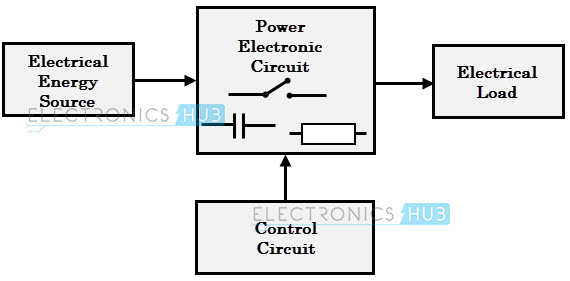
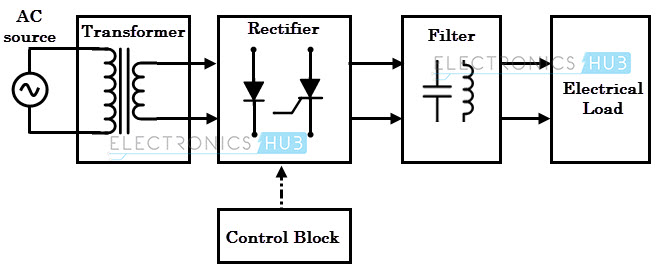

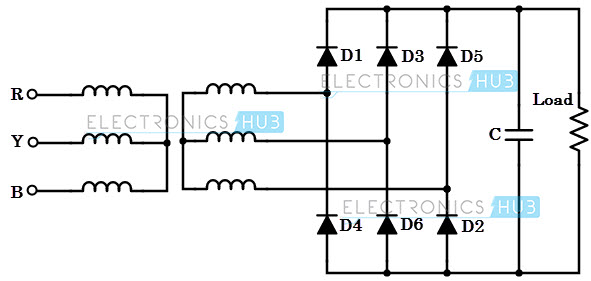
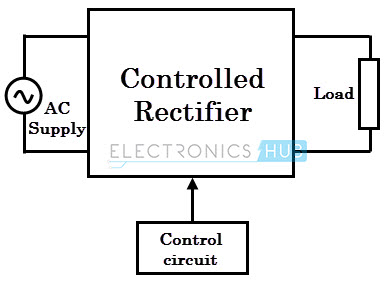
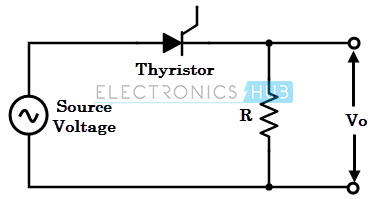
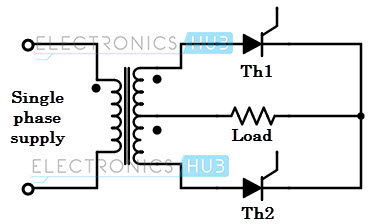
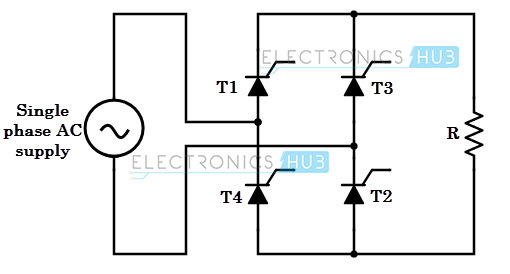
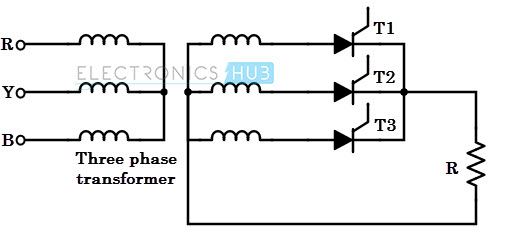
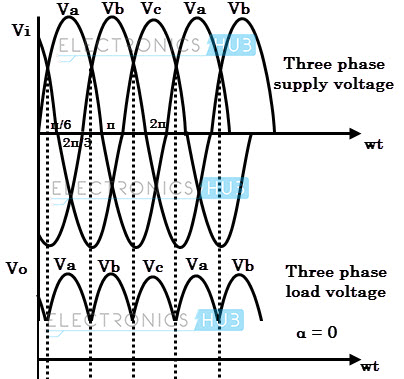
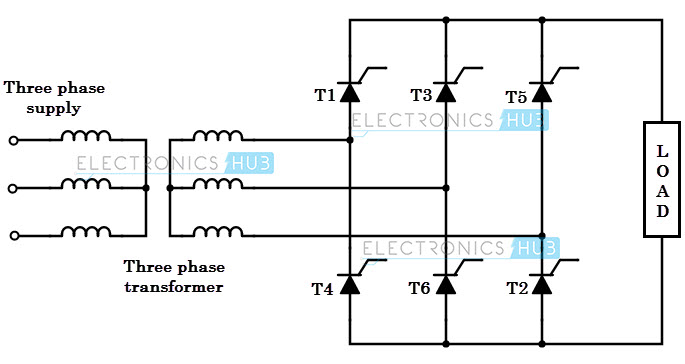
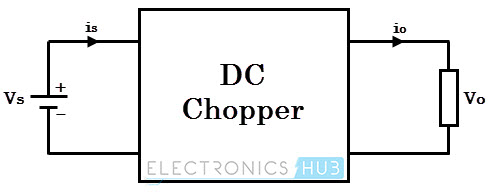
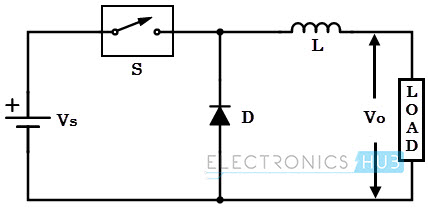
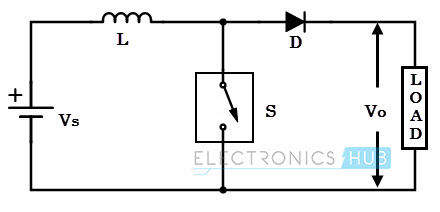
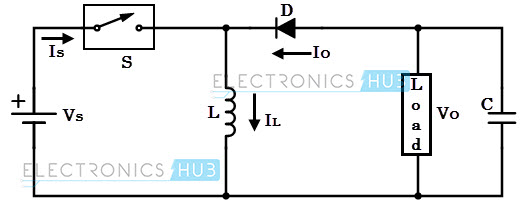
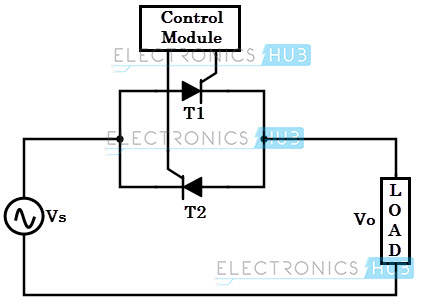

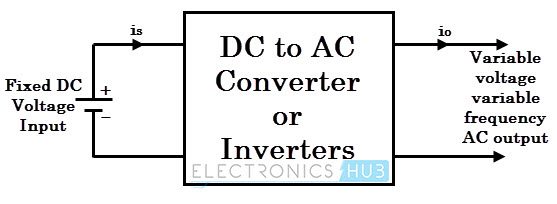


![]()